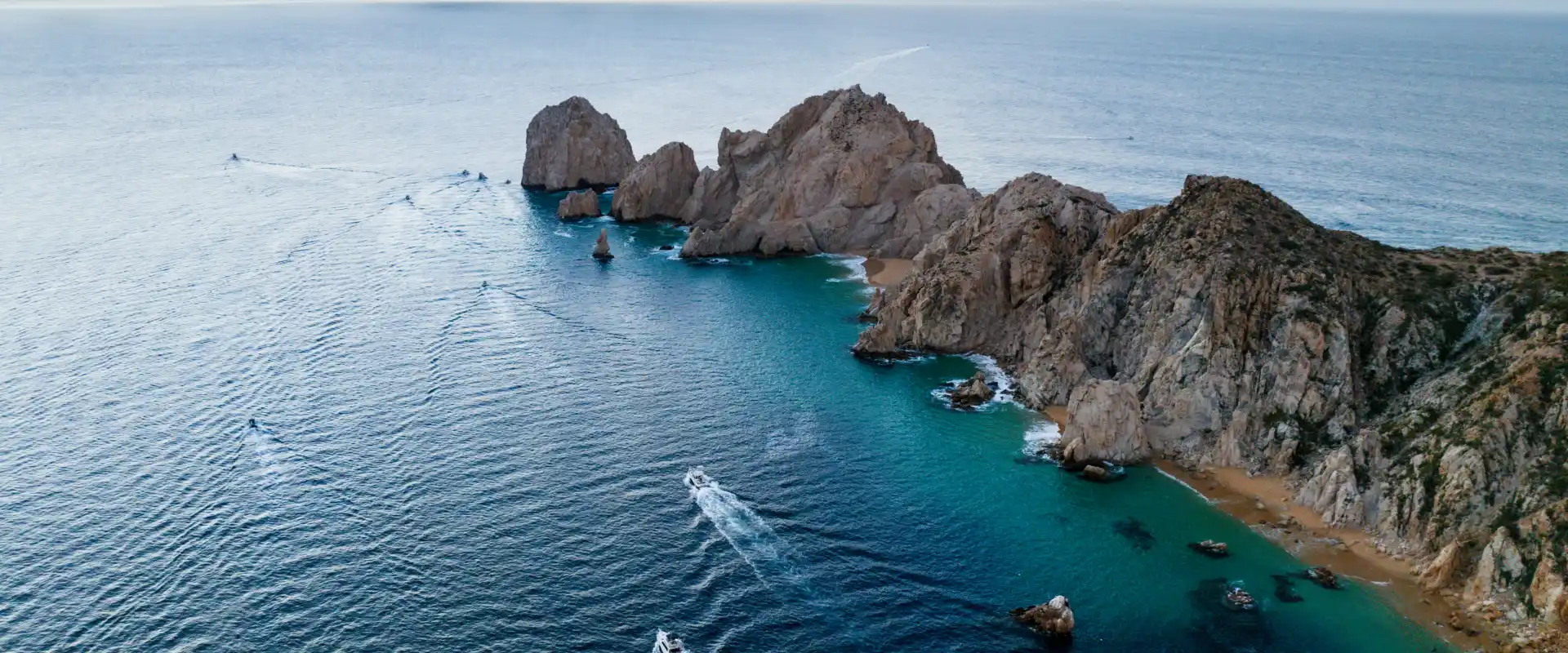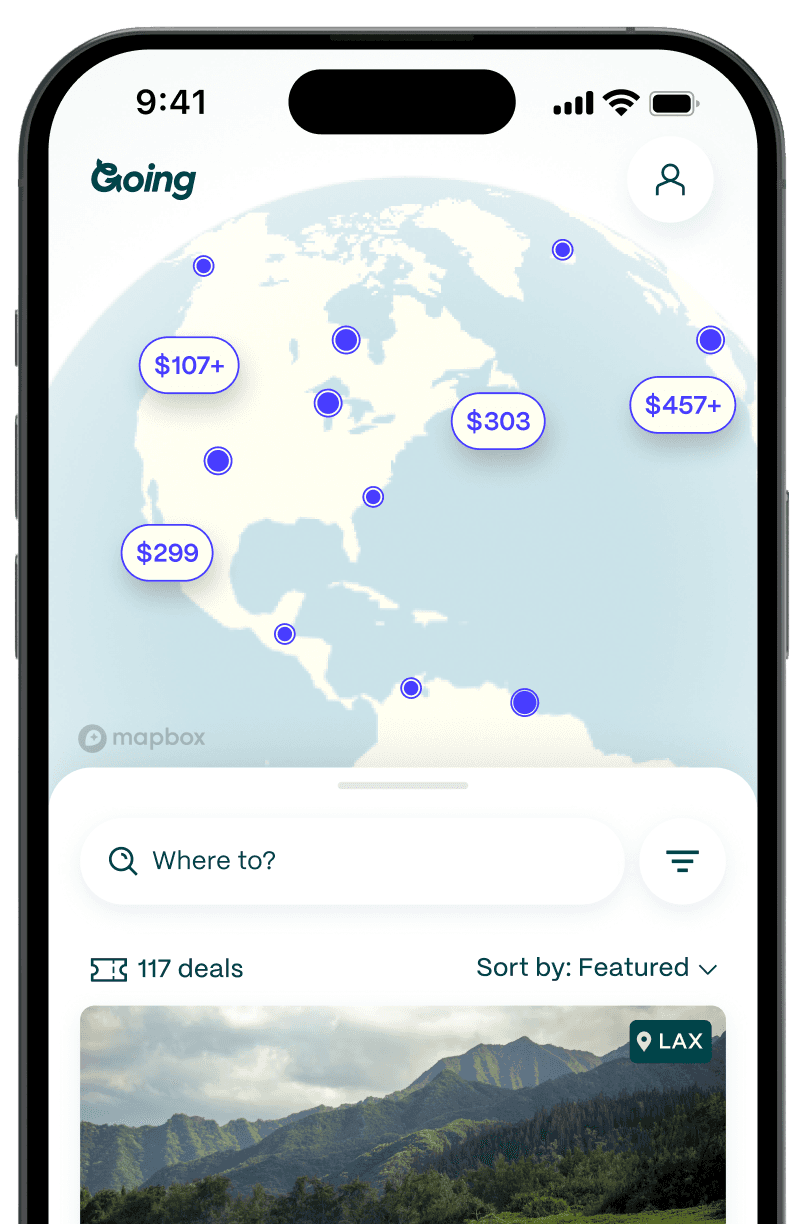
The 12 Most Beautiful Places in Mexico You Need to Visit Now
Table of Contents
Mexico’s diverse landscape is home to legions of beautiful places that would take a lifetime to explore. From white-sand Caribbean beaches lapped by turquoise waters to millenary rock formations and charming towns with well-preserved colonial architecture, Mexico has no lack of spots to enthrall its visitors with beauty.

While some of these places can be easily accessed by jumping on a plane, others require long drives to get there—sometimes even traveling by ferry—so plan accordingly. Here are 12 of Mexico’s most beautiful places.
Summarize with ChatGPT | Perplexity | Claude | Google AI Mode | Grok
Ik Kil cenote

Formed millions of years ago by the crash of a large meteorite, the Yucatán Peninsula cenotes are sinkholes filled with water, often connected by underground cave systems; most of the world’s cenotes are found in this area of Mexico, particularly around the Riviera Maya. With somewhere from 6,000–8,000 cenotes, there’s no shortage of options when it comes to swimming in these clear-water natural pools.
Ik Kil cenote is far from “off the beaten path,” but it’s popular for a reason. Not only is it one of the most beautiful cenotes, thanks to lush vegetation that cascades from its cavernous opening all the way down to the water, but its location near Chichen Itzá makes it an ideal stop for a refreshing dip after a long day of admiring Maya ruins. A curious fact about cenotes is that the Maya considered them sacred; to them, they were the entrance to the underworld.
How to get there: Il Kil cenote and Chichen Itzá can be visited by flying into Cancún (CUN), a two-hour 30-minute drive, or Mérida (MID), a one-hour 30-minute drive. The newly opened Tulum airport (TQO) provides a third option, if only with a slightly longer drive at just short of three hours. There are also plenty of tours from any of those cities, but whichever option you choose, bear in mind that this place is popular and is best visited early in the morning or later in the day.
>> See Going’s deals for cheap flights to Cancún and Mérida.
Oaxaca

Known for its rich Indigenous heritage, Oaxaca is one of Mexico’s most representative cities. Its cuisine is revered throughout the country, with mole sauce (made from chilies, spices, and chocolate) and tlayudas (large, crunchy tortillas covered with refried beans and other spreads) taking center stage.
Besides the food, it’s the city’s charming colonial architecture that keeps admirers visiting time and time again. The historic center is best explored on foot, from the Church and Convent of Santo Domingo de Guzmán in the north to the lively Zócalo—the main square—and the colorful markets in the south. These days, some of the city’s main draws are its mezcalerías, which line the streets alongside museums dedicated to the spirit and rooftop bars serving up interesting mezcal-centric cocktails.
Don't waste more money. Learn the best time to book flights and secure the best deals now!
How to get there: There are direct flights to Oaxaca from Mexico City, as well as from many US cities, including LA, Houston, San Francisco, and Chicago. The drive from Mexico City takes about six hours; bear in mind, it's a long windy drive through the mountains.
>> See Going’s deals for cheap flights to Oaxaca.
Hierve el Agua

An hour and a half from the city of Oaxaca, the petrified waterfalls and shallow mineral pools of Hierve el Agua make for a very Instagrammable sight. Meaning "the water boils" in Spanish, these two rock formations only resemble water cascading down a cliff and were formed over thousands of years from minerals that seeped from the rock. Swimming enthusiasts can take a dip in the mineral pools, but the pools’ small size means that the experience will only be pleasant if you visit early in the morning before the tour buses arrive.
How to get there: The hour-and-a-half drive can be easily made from Oaxaca on a tour, but it’s worth noting that local tour companies will bundle the experience with a trip to the Mitla or Montealbán ruins, most certainly adding a few long shopping stops along the way. While it may be interesting for visitors after popular local handicrafts like textiles, black clay, and alebrije figurines, those pressed for time would do well renting a car.
>> See Going’s deals for cheap flights to Oaxaca.
Chiapas

The state of Chiapas houses some of the country’s most idyllic landscapes. Large enough to contain dense rainforests, picturesque mountain towns, and Maya ruins, Chiapas is best visited with plenty of time to explore.
Nature lovers shouldn’t miss the Tzimol waterfalls, which tower over pools of turquoise water. Nearby, almost at the border with Guatemala, the 59 multi-colored Montebello Lakes will make you question whether you’re in Mexico or New Zealand, a testament to the country’s natural diversity. The Sumidero Canyon, a mere 30 minutes from Tuxtla, the state capital, is best viewed from the water on a boat ride that snakes through the imposing walls of rock.
On the other side of the state, a five-and-a-half-hour drive northeast of Tuxtla, the UNESCO-designated Palenque ruins stand out in the verdant jungle and are a visually striking example of what the Maya civilization achieved in its heyday.
How to get there: There are direct flights to Tuxtla from Mexico City. From there, you can rent a car or take a bus from the airport to San Cristóbal de las Casas, a picturesque mountain town worth exploring, before heading to Comitán, where you can stop for a night as a base to visit the Tzimol waterfalls and Montebello Lakes. To visit Palenque, you can take a bus from Tuxtla or San Cristóbal de las Casas. The boat ride through the Sumidero Canyon leaves from the piers at Chiapa de Corzo.
>> See Going’s deals for cheap flights to Tuxtla.
Marieta Islands

The Marieta Islands are an uninhabited archipelago formed thousands of years ago by volcanic activity. In the 1960s, Jacques Cousteau and other activists fought to protect these islands from human activity following the Mexican government’s bombing of the area for military testing; however, it wasn’t until 2008 that it was declared a UNESCO World Heritage site.
Hidden Beach, known as Playa del Amor in Spanish, is the most unique sight in the archipelago. Viewed from the top, the beach looks as if it were hiding under a rock that had its lid blown off. This crater can’t be accessed from the top though, and the beach can only be reached by boat.
How to get there: There are flights to Puerto Vallarta from Mexico City and many US airports, including LA, Dallas, and San Diego. The Marietas can be accessed by boat on a guided tour from Puerto Vallarta—it would take about an hour—or from the resort area in Punta Mita in 15 minutes. Bear in mind that access to the Hidden Beach is limited to 116 people per day to combat over-tourism and is not guaranteed—the conditions need to be safe enough for visitors to swim the last leg of the journey through a 45-foot tunnel with Pacific currents in low tide. Once at the beach, you can only stay for 20–30 minutes before heading back to the boat.
>> See Going’s deals for cheap flights to Puerto Vallarta.
Tulum ruins

Bordered by the Caribbean Sea, the Tulum ruins were inhabited by the Maya from the 13th–15th centuries and are a sight to behold given they’re seemingly the only Maya settlement built on the beach. While they might not be as expansive as Chichen Itzá (also on the Yucatán Peninsula) or Palenque in Chiapas, their stunning cliffside views of the sea have made them famous around the world.
Interestingly, evidence suggests that the Maya actually called this settlement Zamá, meaning “city of the dawning sun.” One of its main attractions is Playa Ruinas, a white-sand beach immediately below the ruins that can be accessed by a wooden staircase. The Tulum ruins are open to the public daily from 8am to 5pm; it’s worth visiting the beach early before the crowds descend.
How to get there: Tulum’s airport (opened in late 2023) will have direct flights from several US cities. In 2024, even more flights will be added to the schedule. Alternatively, visitors can arrive in Cancún and take a bus an hour and a half to Tulum.
>> See Going’s deals for cheap flights to Cancún.
San Miguel de Allende

Named the world’s best city for a third time in Travel + Leisure’s World's Best Awards and Best Small City in the World in Condé Nast Traveler’s Readers’ Choice Awards, San Miguel de Allende has earned its fame thanks to its striking colonial architecture, cobblestone streets, and myriad art galleries. Its pink-stone church in Churrigueresque (Ultra Baroque) style is one of its defining features, as are the lively rooftops housing chic restaurants and hotels.
The past decade has seen San Miguel de Allende become a culinary hub. The town is also found in a region—effectively Mexico’s “wine and cheese route”—that has quickly grown into one of the world’s newest destinations for viniculture.
How to get there: The closest airports to San Miguel de Allende are Guanajuato International Airport (BJX) and Querétaro Intercontinental Airport (QRO). From either of these airports, there’s an hour-and-a-half drive to San Miguel de Allende. The drive from Mexico City is about four hours.
>> See Going’s deals for cheap flights to Guanajuato and Querétaro.
Celestún

White-sand beaches, turquoise water, a tiny yet charming town square, and knowing you’re miles away from city life constitute the allure of Celestún. That, and the flamingos, of course.
From November to March, flamingos winter in the Mexican state of Yucatán and can be seen up close from a boat in the mangroves. Early morning and just before sunset, during low tide, hundreds of these large pink birds descend in a flurry, a sight not easily forgotten. When they’re done feeding, the birds take flight, and clouds of pink dart through the sky in horizontal lines made up of elongated necks.
How to get there: Celestún is an easy hour-and-a-half drive or two-hour bus ride from Mérida. While most people go to Celestún on a day trip from Mérida, it’s best to spend the night there and take the boat tour out to the mangroves as early as possible.
>> See Going’s deals for cheap flights to Mérida.
Las Pozas

Hidden in the Mexican jungle in the central state of San Luis Potosí is a surrealist realm that seems out of place yet completely blended in with its surroundings. The Edward James Sculpture Garden was created in the 1960s by an eccentric British writer and art collector who became one of the major patrons of the Surrealist movement. In Salvador Dalí’s words, Edward James was “crazier than all the Surrealists together,” and his eccentricity gave birth to a beautiful place that lives on.
Located near the town of Xilitla and often referred to simply as Las Pozas (The Ponds), this sculpture garden feels like a labyrinth overrun by nature, one that you may only find in the confines of a dream.
How to get there: Las Pozas is found deep within the jungle, meaning that it’s a bit of a trek to get there. There are flights to San Luis Potosí from Mexico City; from there, it’s a five-hour drive to Xilitla. From Xilitla, it’s a mere 12 minutes by car to reach Las Pozas. Given the length of the drive, you might want to consider hiring a local guide, such as Auténtico San Luis in San Luis Potosí.
>> See Going’s deals for cheap flights to San Luis Potosí.
Land’s End

At the very tip of the Baja Peninsula, where the Pacific Ocean meets the Gulf of California, a rock formation in the shape of an arch juts out of the water, marking the end of the land, at least as far as this part of Mexico goes.
Interestingly, the water on each side of the arch is a different color and is known to have distinct fish that live in them. To access this natural wonder, visitors need to take a boat, be it a yacht or a catamaran. There are several beaches in the area that can be visited, including Lover’s Beach (good for swimming and snorkeling) and Divorce Beach, which can be reached on foot from Lover’s Beach but has strong currents that discourage swimming. Across from the arch, colonies of sea lions lie lazily on the rocks, their barks and roars blending in with the waves.
How to get there: The arch at Land’s End can be reached on a boat tour from El Medano Beach. There are flights to Los Cabos International Airport (SJD) from Mexico City and several US cities.
>> See Going’s deals for cheap flights to San José del Cabo.
Bacalar

Lake Bacalar, also known as the Lagoon of Seven Colors, is found on the Yucatán Peninsula and is said to possess seven distinct shades of blue. It contains minimal organic material and is so transparent that it glows in the sunlight. Surrounded by mangroves and lush vegetation, its shores have no beaches, but it can be explored on small canoes or sailboats.
How to get there: Bacalar is a five-hour drive from Cancún, whose airport is well-connected internationally. The Tulum airport will offer more convenient options, as the drive from there is just over two and a half hours.
>> See Going’s deals for cheap flights to Cancún.
Holbox

North of the Yucatán Peninsula, Holbox is an island where time is said to stand still. For one, cars are not allowed, though golf carts are an acceptable means of transportation. In Holbox, barefoot luxury is next level in the sense that its streets are fully covered in sand; however, luxury here is still scant, and most accommodation options are small eco-resorts. A true bohemian paradise.
Ready for Mexico? Get cheap flights to MX now!
Being in the Caribbean, it goes without saying that Holbox’s beaches are stunning—with minimal sargassum (stringy brown seaweed) compared to nearby beaches. It’s a great spot to swim with whale sharks from June to September, and, like Celestún, the island is home to flamingo colonies in the winter.
How to get there: Being a remote island, getting to Holbox takes a bit of effort. From Cancún, the drive to Chiquilá takes approximately two hours, where ferries to Holbox depart every two hours and take 30 minutes.
>> See Going’s deals for cheap flights to Cancún.
Other Mexico guides
Frequently asked questions
What is the prettiest place in Mexico?
What is the #1 tourist attraction in Mexico?
What is the most beautiful city in Mexico?
What is the nicest safest place in Mexico?
Last updated December 19, 2025
Articles you might like
View All
Best Day Trips from San Francisco: 25 Trips You’ll Actually Want to Take (2026)
Jan 6, 2026
12 min read

30 Free Things To Do In San Francisco That People Keep Recommending
Jan 6, 2026
10 min read

Marrakesh: The North African City Where Storytelling Is an Art
Jan 5, 2026
5 min read






